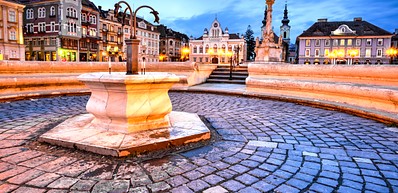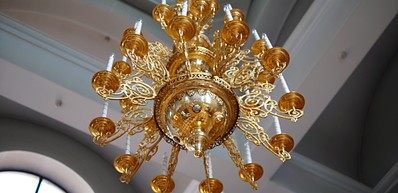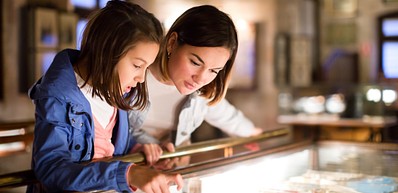
-
![Serbian orthodox church in Timisoara in Romania]() Provided by: RossHelen / Shutterstock.com
Provided by: RossHelen / Shutterstock.com -
![Serbian Orthodox Cathedral in Timisoara, Romania]() Provided by: BoskoM / Wikimedia Commons
Provided by: BoskoM / Wikimedia Commons

Our travel guides are free to read and explore online. If you want to get your own copy, the full travel guide for this destination is available to you offline* to bring along anywhere or print for your trip.
*this will be downloaded as a PDF.Price
€4,95
Serbian Orthodox Cathedral
The guide was updated:Built in 1754, the same year as the Roman Catholic cathedral that it faces across the square, this immense building stands as a reminder that this city lies on the Serbian frontier, with a large Serb population calling the city home and many cultural ties across the border.
Useful Information
- Address: Piaţa Unirii, Timisoara
Digital Travel Guide Download
Our travel guides are free to read and explore online. If you want to get your own copy, the full travel guide for this destination is available to you offline* to bring along anywhere or print for your trip.
*this will be downloaded as a PDF.Price
€4,95

The main square of Timisoara’s Old Town is the most picturesque and a focal point for the whole city. Named "Union Square" after the two cathedrals that face one another across it, this is the perfect place to relax in a café and engage in some people watching.
Read more

Serbian Orthodox Cathedral
Built in 1754, the same year as the Roman Catholic cathedral that it faces across the square, this immense building stands as a reminder that this city lies on the Serbian frontier, with a large Serb population calling the city home and many cultural ties across the border.
Read more

Roman Catholic Cathedral
Located directly opposite the Serbian Orthodox cathedral, the Baroque Roman Catholic cathedral fills the eastern end of Piaţa Unirii. Have a look above the altar to marvel at a painting carried out by Michelangelo Unterberger of the Viennese Fine Art Academy.
Read more

Huniade Castle
Now housing the Banat History Museum, this magnificent 14th century palace (the oldest monument still standing in the city) was built by John Hunyadi during the reign of the Hungarian king Carol Robert and redesigned by the Hapsburgs in the late 18th century.
Read more

Cetate Synagogue
In 1864, when Timisoara was part of the Austro-Hungarian empire, the Jews of the empire were emancipated and in the same year, they were granted the right to build this impressive synagogue. It was turned into the Romanian Jewish History Museum years later.
Read more

Romanian Orthodox Cathedral
With 5,000 wooden struts beneath it to hold it up from the swamp Timisoara is built on, the Romanian Orthodox Metropolitan Cathedral was built between 1936 and 1946. It has memorial crosses to those who died during the revolution of 1989. Also, this cathedral, now considered one of the symbols of the city, is located in a central and quiet area surrounded by parks.
Read more

Banat Village Museum
This large open-air collection of 19th-century peasant houses offers a fascinating glimpse into a bygone age, including folk performances. Situated 6 kilometres northeast of the city centre, tram 1 goes there from the Timisoara-Nord train station.
Read more

Victory Square
This representative square is a great place from where to start your tour of Timisoara, since it's close to the Opera House, the Orthodox Church and the statue of Romulus and Remus, just to mention a few attractions. Furthermore, it is a nice place to visit for its own sake because of the cosy cafés and parks that surround it.
Read more

Rose Park
If Timisoara is called "the city of flowers" it is largely due to this amazing park that offers a wide array of different, colourful flowers and lots of white benches that combine to create an extremely romantic atmosphere.
Also, this park is pretty close to Bega River, so if you still feel like walking a bit, you should definitely check it out as well.
Read more

Opera House
A must see in Timisoara is the Opera House, located right in the city centre by the beautiful Victory Square, full of cafes where you can relax after a visit to the Opera House. Built between 1871 and 1875, the architecture of this building is enchanting both within and without.
Read more

Muzeul de Arta
This affordable museum located in the beautiful Plata Unirii is located in a suggestive and recently renovated baroque building. Both the permanent and temporary collections are worth a visit, especially to have a look at the paintings of some Romanian artists, a great way to immerse yourself a bit more into Romanian culture.
Read more

Theresia Bastion
This eighteenth century fortification was named after Queen Maria Theresia (mother of Marie Antoinette, the Queen of France) who actually acted and was considered as an empress in the Habsburg states. Theresia Bastion is a nice venue for hanging out with friends during summer evenings because of the different cafés and bars that create a lively atmosphere.
Read more

Termalum
After having wandered through the city for a while, spoil yourself with some time at this spa: whether it is a sauna, a hydro-massage or one of the different kinds of massages offered at Termalum (therapeutic, facial, energizing, anti-cellulite, etc.) just relax and enjoy.
Read more

Recas
Romania has a large wine industry. In fact, just 25 km outside Timisoara you will find the Recas vineyards where you can take long wine tasting tours and then buy the genuine products they offer. The friendly staff and the wonderful location make the visit even more enjoyable.
Read more

Tökés Reformed Church
This church, located few minutes away from the city centre, has great historical importance since it was here the 1989 revolution began, when Father Lászlo Tökés spoke out against the regime, bringing people onto the streets to resist the attempts to arrest him.
Read more

Memorialul Revolutiei
If you want to better understand Timisoara and the historical importance the city has, then you have to pay a visit to the Memorialul Revolutiei. Have a look at the short film about the role of Timisoara in the 1989 revolution and then start wandering in the museum, founded by a veteran of the same revolution.
Read more



